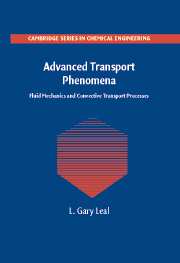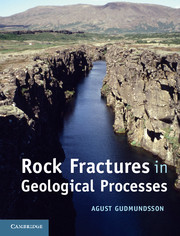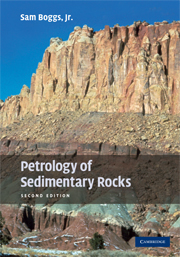Refine listing
Actions for selected content:
1211 results in Ebooks in petroleum sciences

The Magnetotelluric Method
- Theory and Practice
-
- Published online:
- 05 July 2012
- Print publication:
- 26 April 2012

Advanced Transport Phenomena
- Fluid Mechanics and Convective Transport Processes
-
- Published online:
- 05 June 2012
- Print publication:
- 18 June 2007

Rock Fractures in Geological Processes
-
- Published online:
- 05 June 2012
- Print publication:
- 28 April 2011

Petrology of Sedimentary Rocks
-
- Published online:
- 05 June 2012
- Print publication:
- 19 February 2009

Oil, Dollars, Debt, and Crises
- The Global Curse of Black Gold
-
- Published online:
- 05 June 2012
- Print publication:
- 14 December 2009
10 - Case histories and geological applications
- from 3 - Earth’s electromagnetic environment
-
-
- Book:
- The Magnetotelluric Method
- Published online:
- 05 July 2012
- Print publication:
- 26 April 2012, pp 480-544
-
- Chapter
- Export citation
Copyright page
-
- Book:
- The Magnetotelluric Method
- Published online:
- 05 July 2012
- Print publication:
- 26 April 2012, pp iv-iv
-
- Chapter
- Export citation
6 - Distortion of magnetotelluric data: its identification and removal
- from 3 - Earth’s electromagnetic environment
-
-
- Book:
- The Magnetotelluric Method
- Published online:
- 05 July 2012
- Print publication:
- 26 April 2012, pp 219-302
-
- Chapter
- Export citation
The Magnetotelluric Method - Title page
-
-
- Book:
- The Magnetotelluric Method
- Published online:
- 05 July 2012
- Print publication:
- 26 April 2012, pp iii-iii
-
- Chapter
- Export citation
4 - The magnetotelluric response function
- from 3 - Earth’s electromagnetic environment
-
-
- Book:
- The Magnetotelluric Method
- Published online:
- 05 July 2012
- Print publication:
- 26 April 2012, pp 122-164
-
- Chapter
- Export citation
7 - The two- and three-dimensional forward problems
- from 3 - Earth’s electromagnetic environment
-
-
- Book:
- The Magnetotelluric Method
- Published online:
- 05 July 2012
- Print publication:
- 26 April 2012, pp 303-346
-
- Chapter
- Export citation
Contributors
-
-
- Book:
- The Magnetotelluric Method
- Published online:
- 05 July 2012
- Print publication:
- 26 April 2012, pp xviii-xviii
-
- Chapter
- Export citation
2 - The theoretical basis for electromagnetic induction
-
-
- Book:
- The Magnetotelluric Method
- Published online:
- 05 July 2012
- Print publication:
- 26 April 2012, pp 19-49
-
- Chapter
- Export citation
Index
-
- Book:
- The Magnetotelluric Method
- Published online:
- 05 July 2012
- Print publication:
- 26 April 2012, pp 545-552
-
- Chapter
- Export citation
Preface
-
- Book:
- The Magnetotelluric Method
- Published online:
- 05 July 2012
- Print publication:
- 26 April 2012, pp xv-xvii
-
- Chapter
- Export citation
9 - Instrumentation and field procedures
- from 3 - Earth’s electromagnetic environment
-
-
- Book:
- The Magnetotelluric Method
- Published online:
- 05 July 2012
- Print publication:
- 26 April 2012, pp 421-479
-
- Chapter
- Export citation
3A. - Conductivity of Earth materials
- from 3 - Earth’s electromagnetic environment
-
-
- Book:
- The Magnetotelluric Method
- Published online:
- 05 July 2012
- Print publication:
- 26 April 2012, pp 50-95
-
- Chapter
- Export citation
The Magnetotelluric Method - Half title page
-
- Book:
- The Magnetotelluric Method
- Published online:
- 05 July 2012
- Print publication:
- 26 April 2012, pp i-ii
-
- Chapter
- Export citation
3 - Earth’s electromagnetic environment
-
- Book:
- The Magnetotelluric Method
- Published online:
- 05 July 2012
- Print publication:
- 26 April 2012, pp 50-544
-
- Chapter
- Export citation
3B. Description of the magnetospheric/ionospheric sources
- from 3 - Earth’s electromagnetic environment
-
-
- Book:
- The Magnetotelluric Method
- Published online:
- 05 July 2012
- Print publication:
- 26 April 2012, pp 96-121
-
- Chapter
- Export citation
